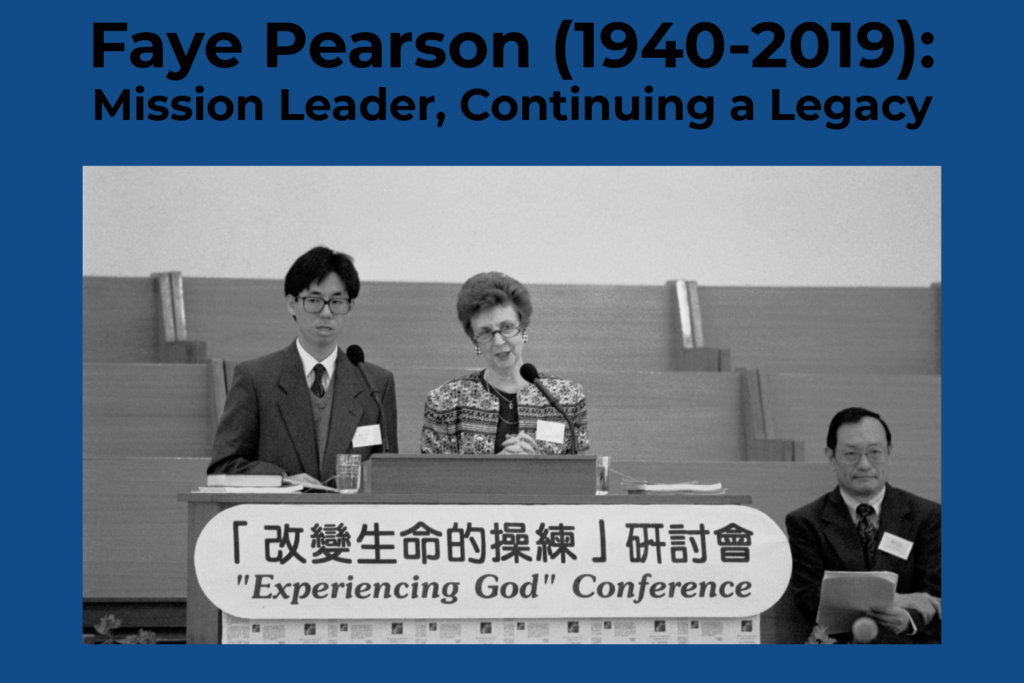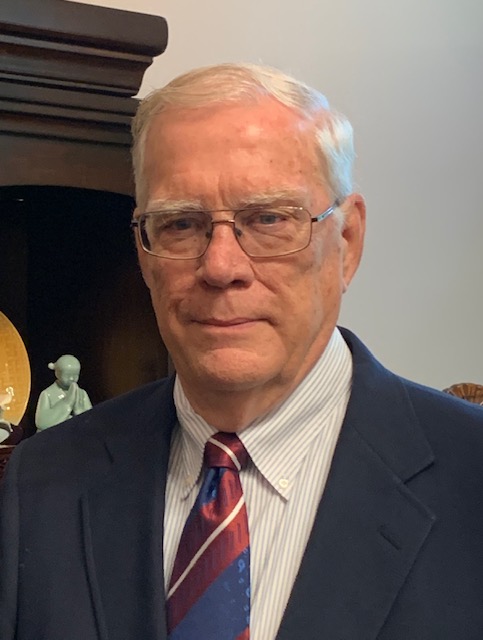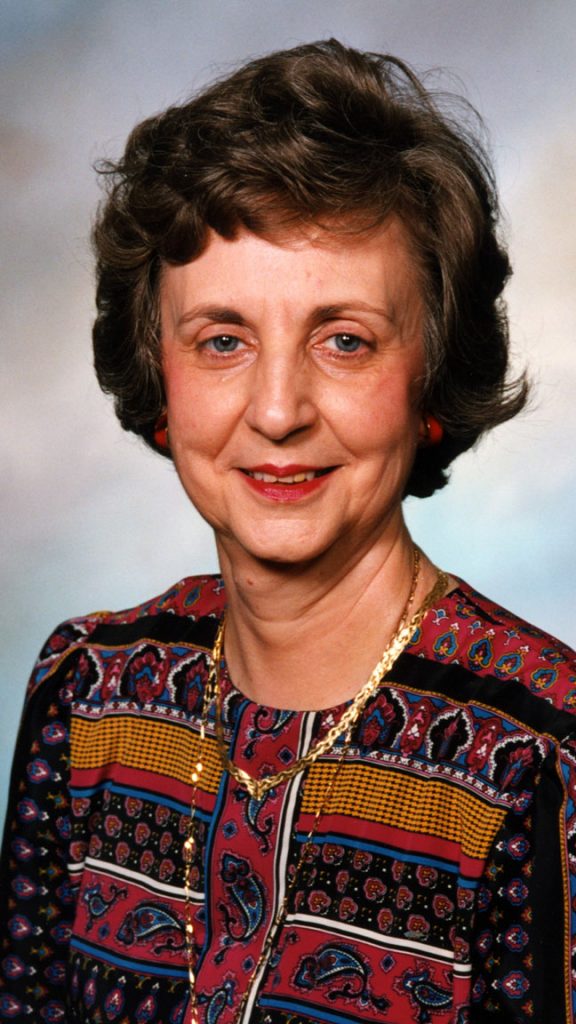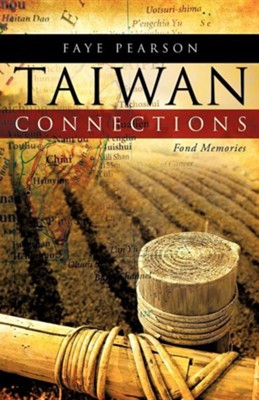Faye Pearson: Trailblazing Mission Leader in Taiwan

By Ron West
In any list of Baptist women in missionary leadership, Southern Baptist missionary Faye Pearson would certainly be in the roll of qualified candidates. Pearson served more than 30 years as a missionary under appointment by the Foreign Mission Board (FMB), later International Mission Board (IMB), of the Southern Baptist Convention. She had been a mission leader, serving as an Area Director for East Asia, supervising Southern Baptist mission work in six countries collectively holding one fifth of the world’s population. She had been a churchwoman, serving on the staff of a local church and supervising Baptist Young Women’s work for the WMU in a state convention and taught missions on the seminary level.

Missions as an Opportunity of Service
Throughout our history, the mission field has been an avenue for Baptist women to live out their calling to ministry and experience leadership opportunities that were often not possible while serving in their home country. Southern Baptist missions history is replete with examples of both single and married women who achieved hero status in Baptist missions lore. From Ann Hasseltine Judson to Lottie Moon to the present day, Baptist missionary women have pioneered, suffered, served, and led in a multitude of rolls. They have been evangelists, church planters, doctors, nurses, school administrators, teachers, seminary professors and just plain missionaries, often while supervising their own home and raising children.
Faye Pearson has continued the legacy of courageous leadership established by a host of missionary women.
Missionary Calling
Pearson was born in Laurel, Mississippi in 1940. She attended a local Southern Baptist church and responded to the gospel message preached there and was saved and baptized when she was 10 years old.
Being in a Southern Baptist church, she was introduced to missions through the Girls Auxiliary (GA) group at her church. Fewer Southern Baptist churches offer the introduction to missions or the opportunity to hear mission stories through GAs and other mission organizations that were so common a half century ago. Pearson first felt a call to missions during this time.
After attending McNeese State University in Louisiana, Pearson entered Southwestern Baptist Theological Seminary in Fort Worth, Texas. In those days Southwestern had a reputation for training missionaries.
Taiwan Beginnings
Pearson was appointed in 1968 as a student worker to Taiwan. Her job description was as an evangelist with university students. She arrived in Taiwan and immediately began Mandarin Chinese language study. Her ability to speak Mandarin would be crucial for her later work as a seminary professor in Taiwan and China.
Pearson was joining a strong team of women who had helped open the work in Taiwan. Bertha Smith was the first Southern Baptist missionary to come to Taiwan from China. She arrived in October 1948 and by August 1949 had established the first Baptist Church in Taiwan, Jen Ai Baptist Church of Taipei. As other missionaries and nationals arrived from China a seminary was established to train new pastors with Bertha teaching Old Testament.[1]
Bertha Smith was followed by several other single women missionaries and couples who were forced to leave China. These “Old China Hands” knew the language and the people well. They were able to quickly start work among the refugees from China and later among the native Taiwanese. Most of the single women were given the title general evangelist in those days. There was no hesitation to do whatever ministry was required. This was the work for which Faye Pearson was appointed. She would continue their legacy after many of them had left the field.
Missionary student evangelists were typically assigned to a church near a major university and operated a student center in that church. Most of Pearson’s students had never read a Bible or heard the gospel before meeting her. They came from background of idol worship and ancestor worship. Pearson’s personality was one that built trust and respect with the students. Fifteen students from those early years were called into ministry, went to seminary, and became excellent pastors and leaders in the Baptist convention. This would only be the beginning of her impact on Baptist work in Taiwan and though out Asia.
Seminary: Equipping Leaders
In 1981 the president of the Taiwan Baptist Theological Seminary asked Pearson to move to Taipei to teach at the seminary. He wanted her to head the Religious Education program. Her philosophy for Theological Education was to have a biblically based, Chinese culturally sensitive church education program that is practical, creative, and evangelistic.[2]
A New Challenge
In 1989, Pearson was shocked when Sam James the Area Director for East Asia asked her to be associate area director for Taiwan, Macau, and Hong Kong. She would be the first woman to serve in this position with the FMB. The job description was to serve as counselor, encourager, pastor to the missionary and the missionary family, and to make available training opportunities for the missionary.
Pearson stated: “Sam James asked Keith Parks if he would approve my serving as the East Asia Associate Area Director and Keith’s response was, ‘Yes, but please do not use pastor in the announcement when it comes out in the U.S.’ He knew this would be a problem for some of the trustees.”[3]
Pearson would have to use her best leadership skills to build working relationships with the strong personalities in each mission. She would also need to work with the leaders of the national convention in each country. Pearson’s humble, patient, yet confident personality served her well in carrying out these responsibilities.
Area Director for East Asia
When Sam James was elected as the new Regional Leader for Europe in 1992, East Asia missionaries were asked to submit nominees for the Area Director position. Once again, Pearson was shocked when she learned that she was nominated more than any other person for the position. Two-thirds of the men who sent in nominations named Pearson as their first choice. Therefore, it was not an issue with missionary men to have a woman as Area Director. However, it was a major issue for many of the trustees. She was interviewed by the East Asia Search Committee three times and was eventually selected in 1993.
The area included Japan, Korea, Taiwan, Hong Kong, and Macau. There were approximately 600 missionaries in those countries. The total population of the countries was over 200 million. Later China would be added to her responsibility, greatly increasing these numbers.
Dr. Jou Lien Hwa, well known Taiwan pastor and friend of Pearson’s, took her to China and introduced her to Bishop K.H. Ting and Dr. Han Wen Zau, leaders of registered church in China. She promised Bishop Ting that she would work directly with the China Christian Council (CCC) and the Three Self Patriotic Movement (TSPM) as the IMB worked with national conventions in other Asian countries.
Pearson’s dream was to use East Asia career missionaries to work in social ministries, build relationships with local pastors and church leaders, and provide literature for unregistered churches through the CCC structure. The Billy Graham Association was already working through the CCC to support and encourage unregistered churches. Pearson felt that we could also. The situation changed and that was not to happen.
New Directions
In 1998, IMB President Jerry Rankin initiated another paradigm shift at the International Mission Board. It was described as New Directions. The world was divided into affinity groups based on ethnicity instead of geographical regions. In many instances this would mean working separately from existing national Baptist conventions and churches.

Ironically, even though one concern by the trustees for allowing Pearson to lead work in East Asia was her gender, New Directions placed women in many leadership roles. This was especially true of the role of Strategy Coordinator (SC). The Strategy Coordinator, as the name suggests, would be leading a team in making strategy decisions that would fulfill its goal of establishing churches as well as facilitating church planting movements.[4]
These CPM teams in China would also be working with house churches and other groups being led by women. It has been estimated that up to half of all house churches and TSPM churches have women in leadership rolls
Even though she had spent 25 years ministering in the Chinese culture, Pearson was not chosen to lead the Chinese affinity group.
Resignation
Pearson was forced to make the most difficult decision of her missionary career, resigning from missionary service. She believed strongly that working with national leadership was the best strategy in most cases. The missionary does his or her best work serving alongside national coworkers. She did not agree with asking missionaries to turn their back on established churches, institutions, and conventions where relationships had been built over many years. She felt the emphasis on church planting movements to the neglect of other ministries was a mistake. Medical work, student work, social work, agricultural work were all avenues for reaching people and gathering them into churches.[5]
After her resignation, Pearson returned to Taiwan and sold her household goods and said goodbye to the country she had called home for 30 years. She received an outpouring of support, both prayer and financial, from Chinese Christians and churches as she returned to her home in Laurel, Mississippi.
Teaching in China
In January 1997, Han Wen Zau and Jou Lien Hwa came to Mississippi and asked her to come to teach at the Nanjing seminary. This was the CCC’s main seminary.
Pearson was the first foreigner invited to teach full time at a China seminary in 54 years. Pearson’s students came from all over China. There were over 300 students at the seminary. Some were middle-school graduates, most were high school graduates and others were college graduates. The students came from the registered and unregistered churches. They attended and preached in the registered churches on Sunday morning and did the same in the unregistered churches in the evening. Pearson was the first foreigner many of them had ever met.
Pearson was given the opportunity to teach the students missions education, church administration, evangelism, systematic theology, and other courses offered in a typical Baptist seminary. She stated: “I spent hours with the students in the classroom and outside the classroom. I heard their stories, their dreams, their hopes, and their challenges.”
Pearson shared the following on the role of women in the church in China:
“Women play a major role in the church of China. Before 1949 there were few ordained women in China. There were many Bible women who served the church as evangelist and church planters. Today women are strong leaders in the church serving as pastors, seminary professors and in church administration at every level of the church. Some have degrees and others have little education, but they are being used in rural China. They are married and single women, who pastor registered and unregistered churches.” [6]
Pearson stated: “Recently, a friend said to me, “God will not bless a church where there is a woman pastor.” I was shocked! One only has to look at China to see God also calls women to serve Him!”[7]
Return to Taiwan
Pearson planned to stay in China many years, but God had other plans. Dr. Tsai Rae Yi, president of the Taiwan Baptist Theological Seminary came to Nanjing in December 2003 and shared with Pearson his vision of the Taiwan seminary being involved in Cross-Cultural missions. Dr. Tsai said that the Holy Spirit had worked in their hearts and they realized the Great Commission was to the Chinese Church as well.
He begged her to return to the Taiwan Seminary and lead in developing a curriculum for the newly established Missions Department. After prayer and tears, Pearson left Nanjing and returned to the Taiwan Seminary and to Taiwan where her missionary and teaching career had begun.
She succeeded in putting a strong missions curriculum in place. By the time she left graduates of the seminary were serving in Nepal, Burma, Middle East, Africa, Thailand, Indonesia, Germany, Korea, China, and India. They are serving under Chinese and non-Chinese Sending Agencies.
In 2009, Pearson decided it was time to return to America again. She had served her Lord in good times and bad, through joy and sorrow, but always faithful to her calling and the legacy she inherited from those pioneering women missionaries who answered that same call in past years.
As Pearson was leaving Taiwan for the last time, she shared her thoughts. “God took a little girl from rural Mississippi and led her across the world to live out His Love. I stand amazed that He could. I praise Him!! All glory and honor are HIS and HIS alone!!” [8]
After a long battle with cancer, Faye Pearson departed this life on February 20, 2019. She was surrounded by Chinese friends and missionary colleagues. At her funeral, messages of condolence were read from the Presidents of the Taiwan Baptist Seminary and Nanjing Union Theological Seminary. She left a missionary legacy that honored her Savior and those missionary women who inspired her to be a pioneer in missionary leadership roles.
1) Reflections of the Glory of God: Biographical Sketches of Taiwan Baptists Co-workers. Linda Phillips, June,2002.
2) Faye Pearson, Correspondence with author, April 2018.
3) Ibid.
4) Something New Under the Sun – New Directions at the IMB,” Office of Overseas Operations, IMB, January 1999,P,13.
5) Faye Pearson, Interview with author, April 2018.
6) Ibid.
7) Ibid.
8) Faye Pearson, Correspondence with author, April,2018.
Ron West is an emeritus missionary with the International Mission Board of the Southern Baptist Convention. This is a condensed version of an article appearing in the Spring 2019 issue of the Baptist History & Heritage Journal (Vol. 54, No. 1).
Enjoyed this article? Your gifts help us share the Baptist story! Join us in this vital mission!
Choose a one-time gift or set up a recurring donation to sustain our ministry educating and resourcing Baptists worldwide. Donors who contribute $50 or more will receive a one-year subscription to the Baptist History & Heritage Journal, a national scholarly publication examining four centuries of Baptist history.
Give today and make a lasting impact at www.thebhhs.org/give.


